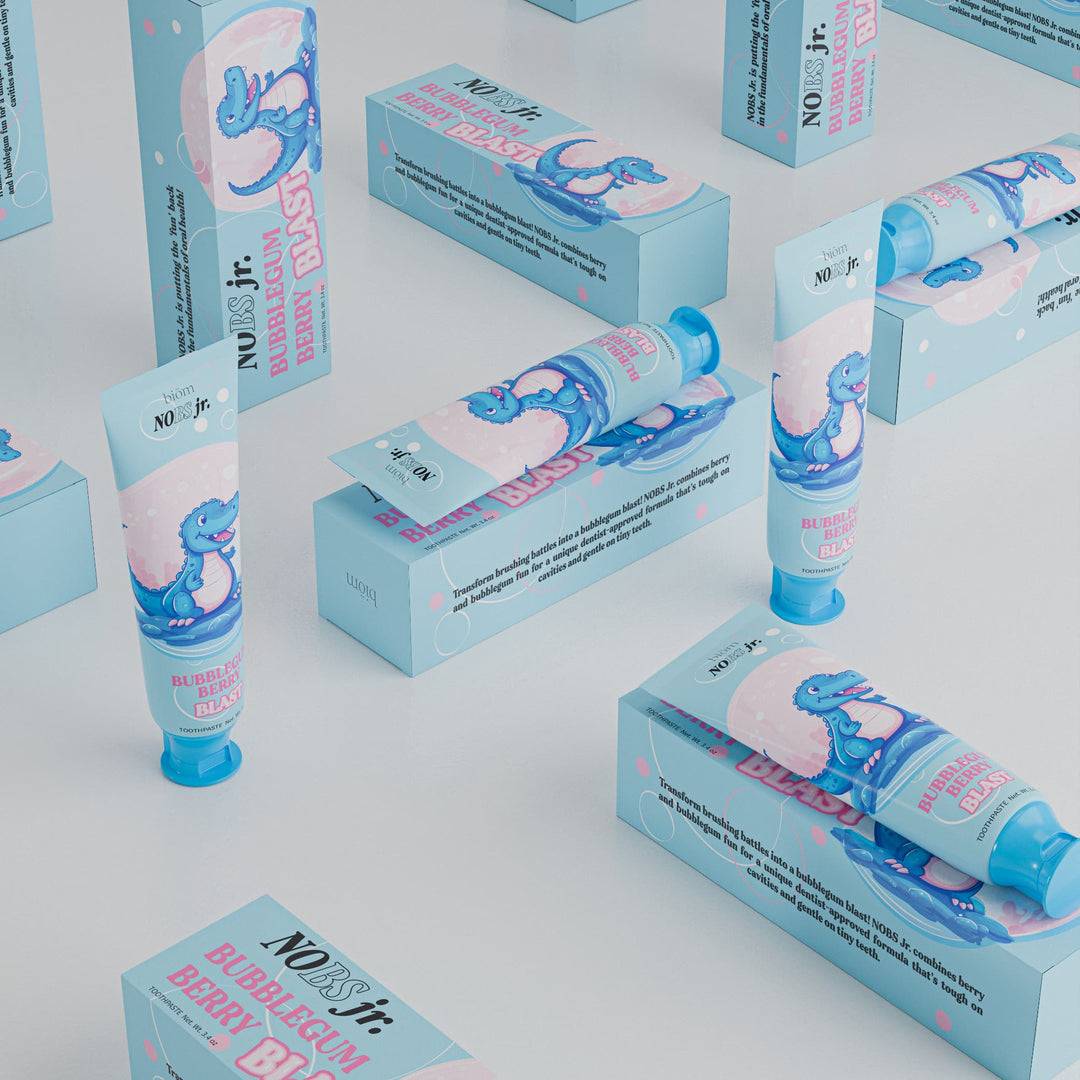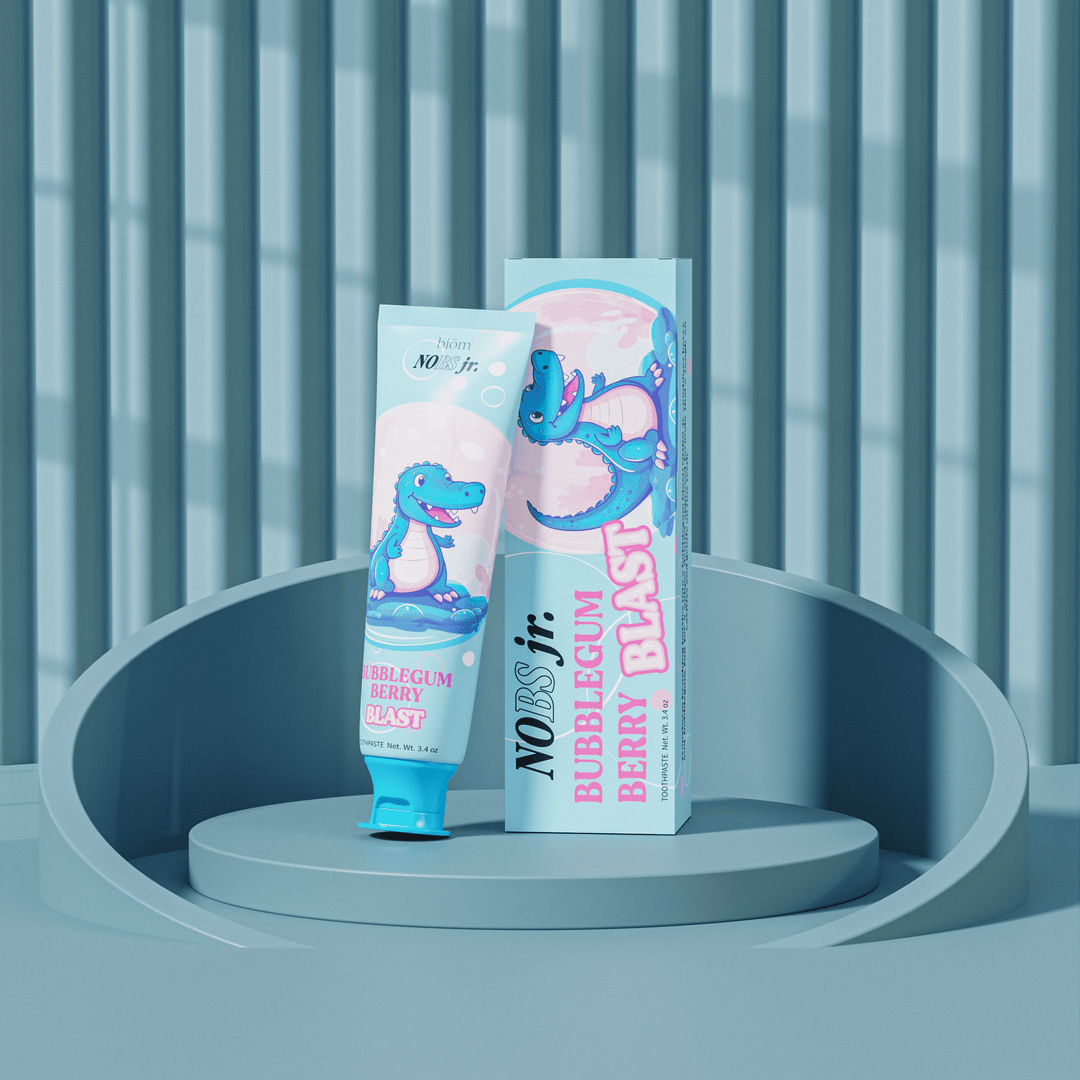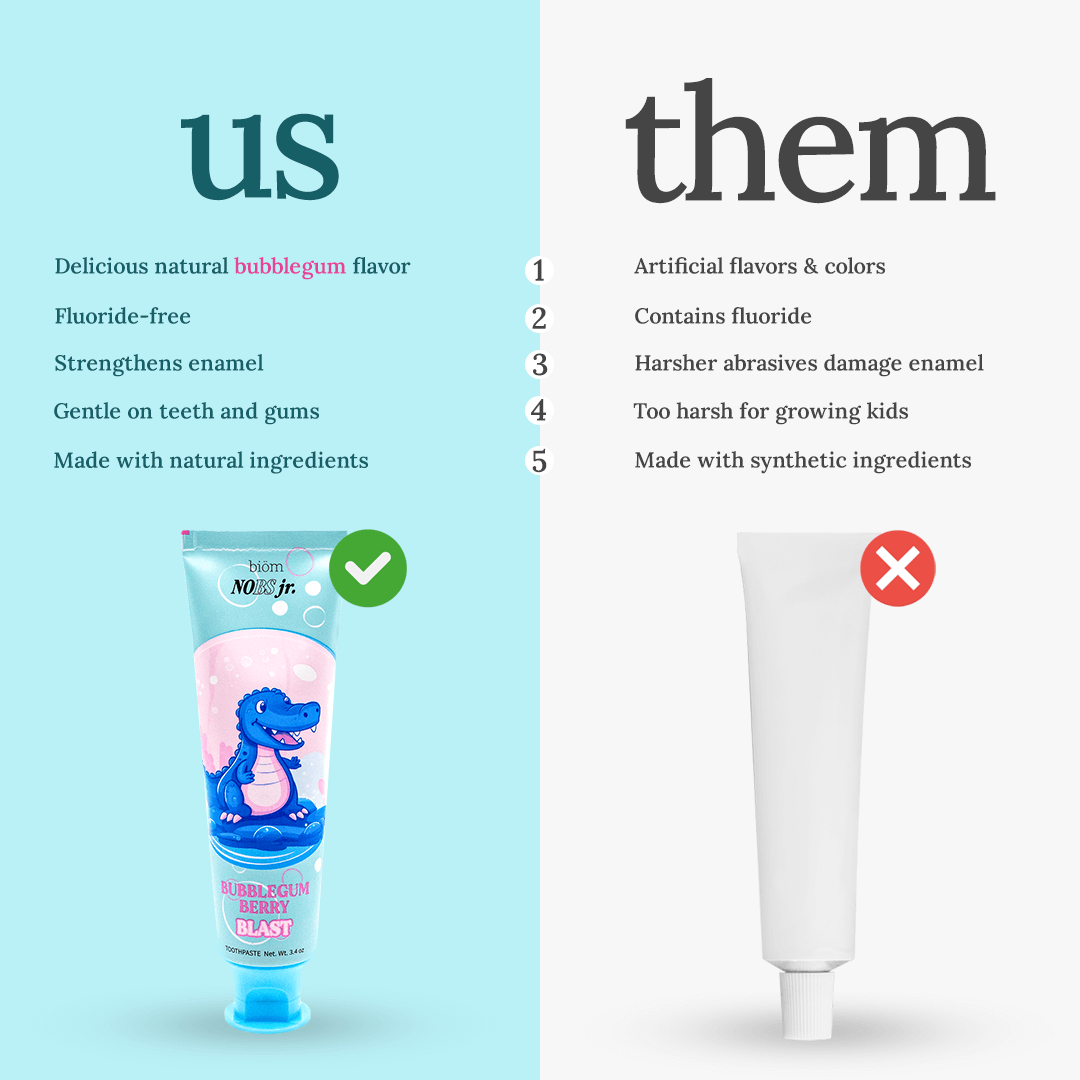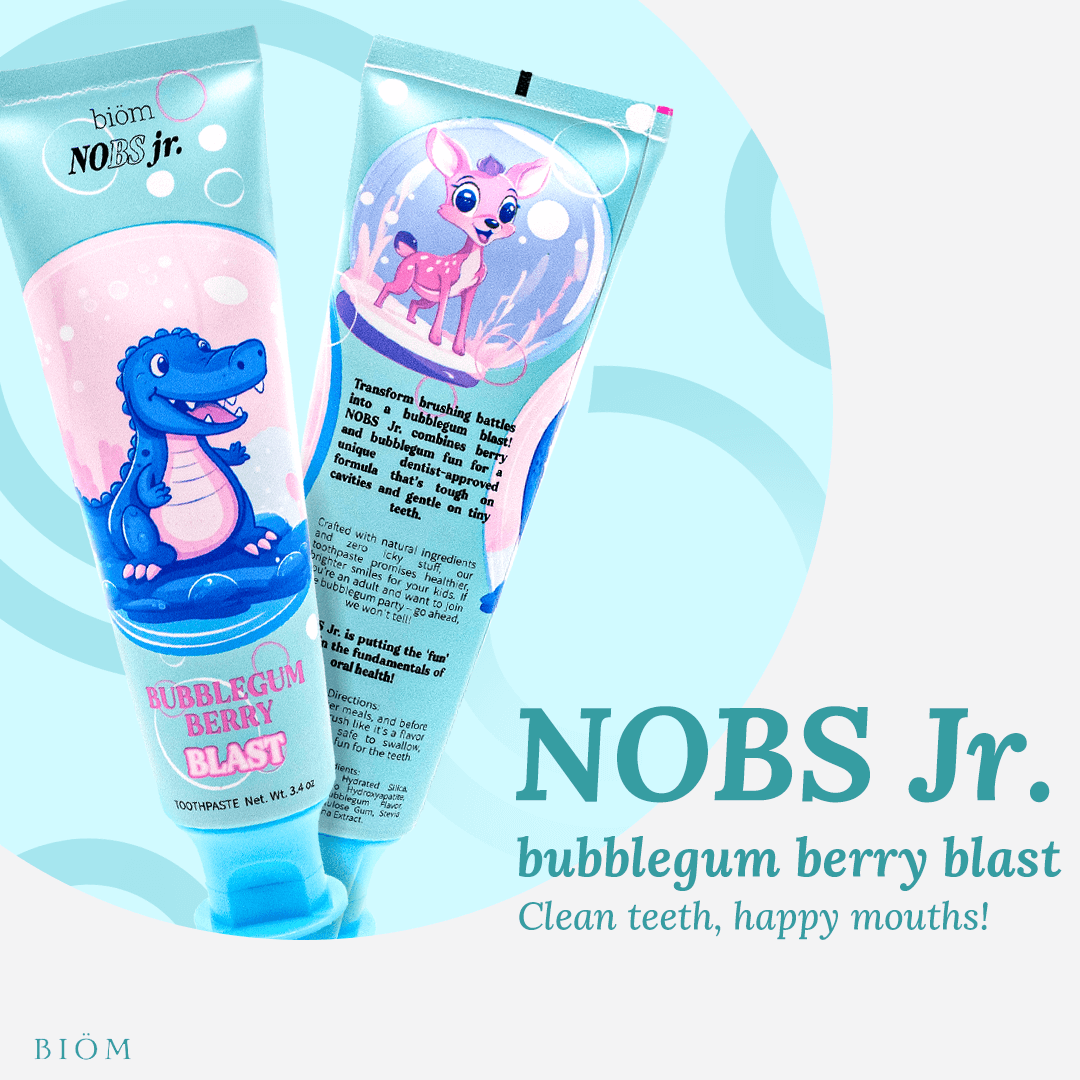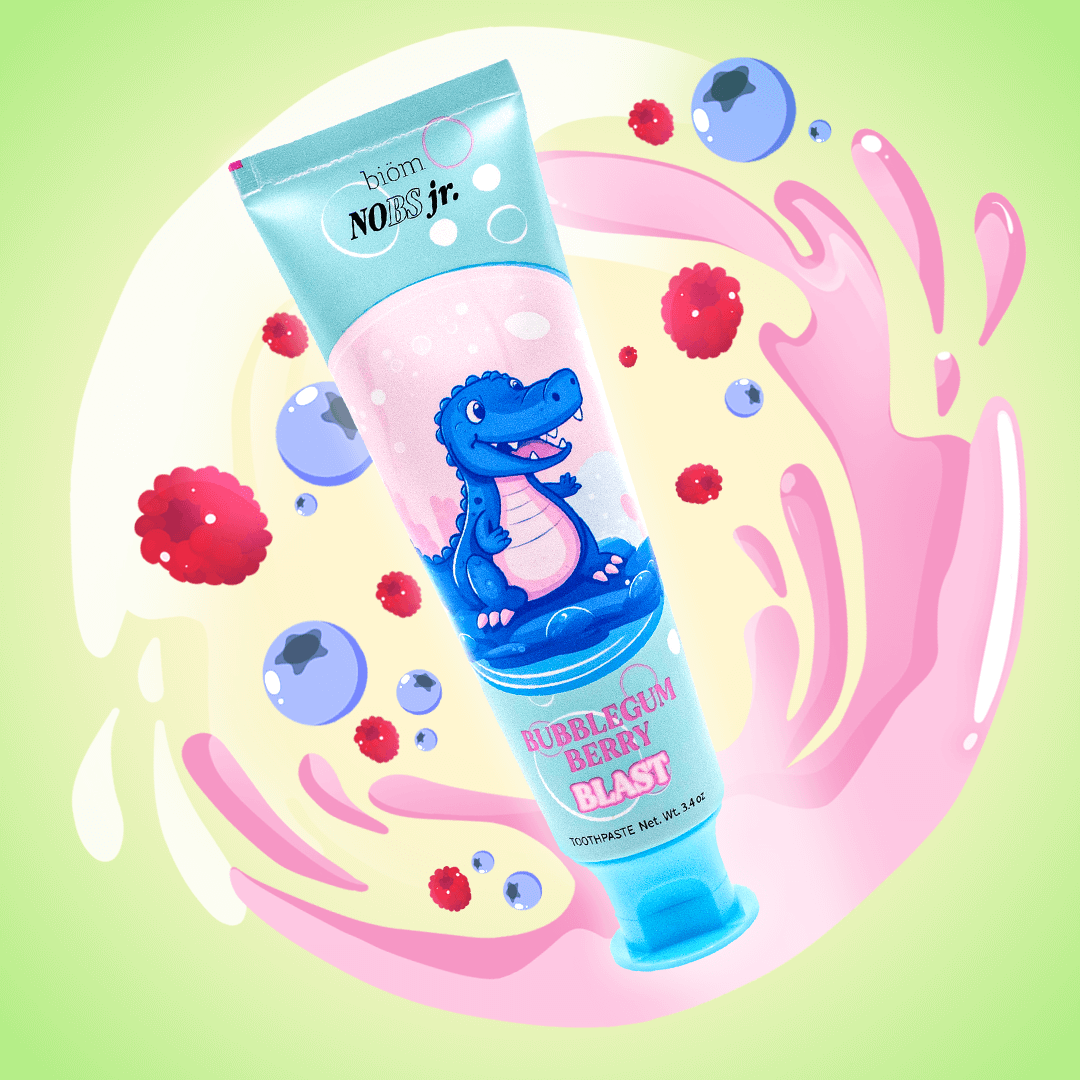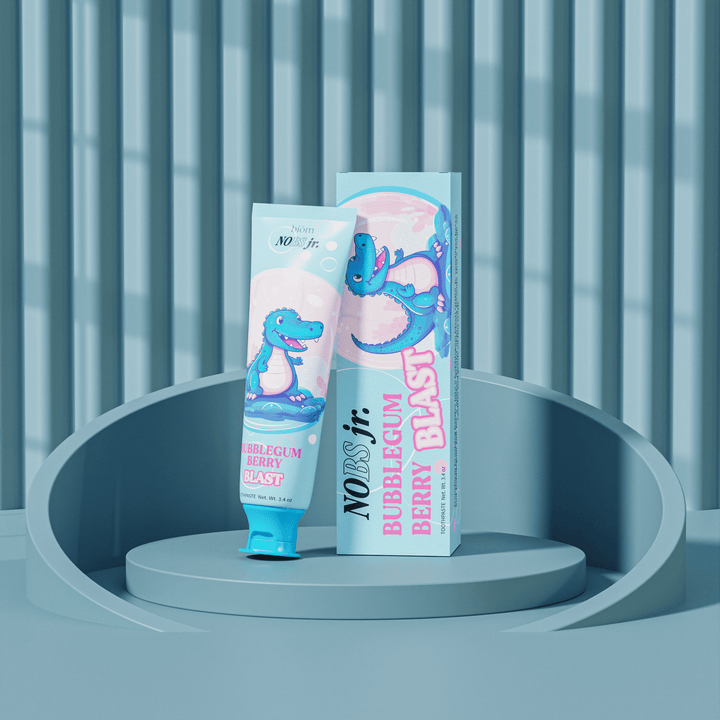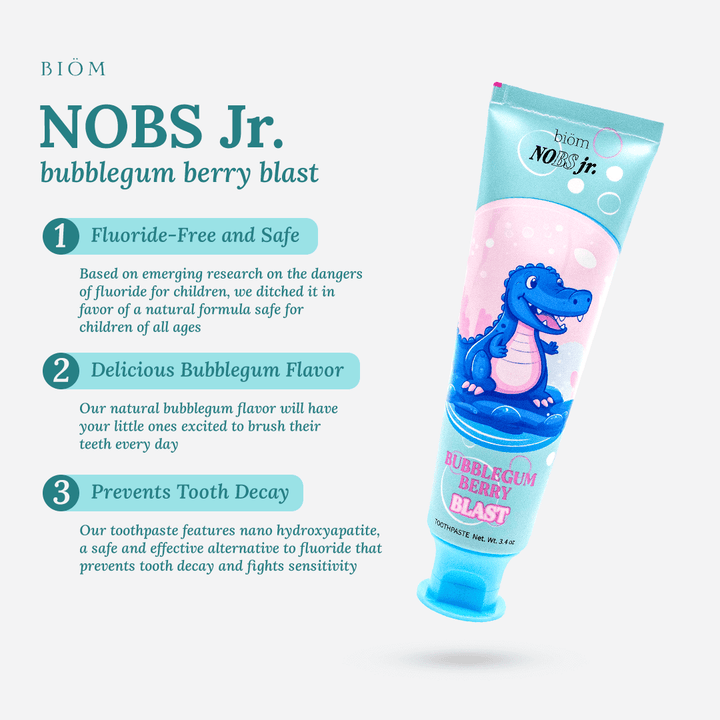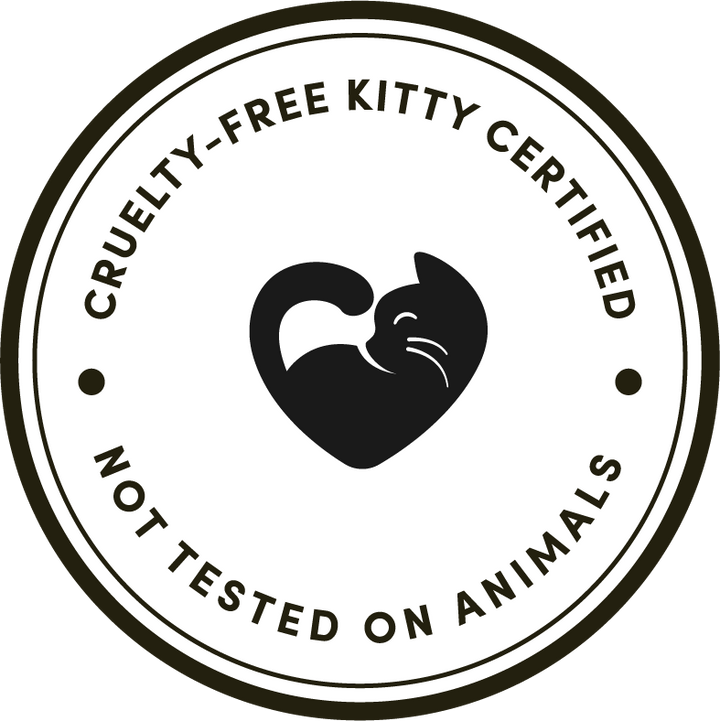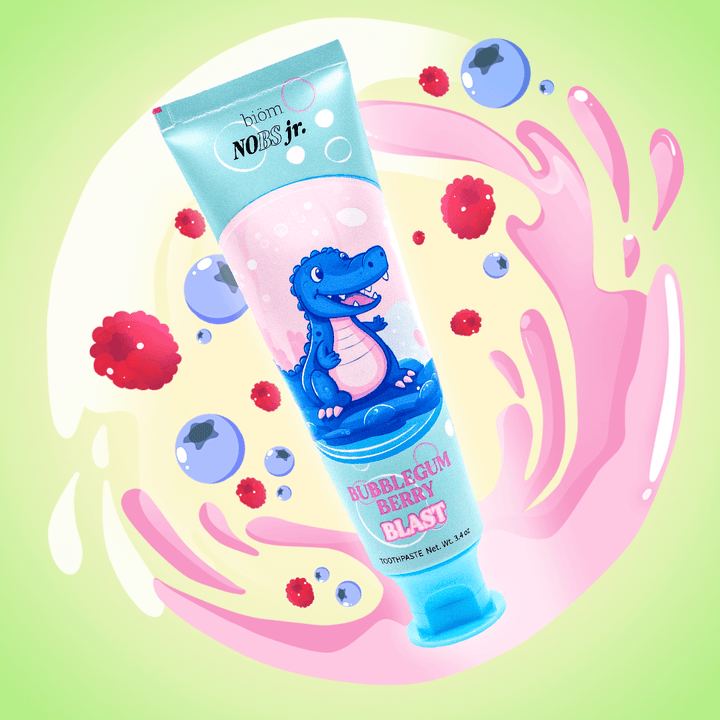Should Kids Use Toothpaste with Fluoride?
While fluoride toothpaste has been proven to reduce caries incidence among kids, hydroxyapatite toothpaste may be a safer and more effective alternative for children.
Given the concerns surrounding fluoride's potential risks, especially in young children and pregnant women, the popularity of hydroxyapatite based toothpaste for kids is on the rise.
Fluoride has been the gold standard in dentistry for decades thanks to its anti-cavity properties. However, the risk of dental fluorosis from ingesting too much fluoride during the critical years of tooth development, along with emerging research suggesting possible links to lower IQ scores in children and neurological impacts, raises valid concerns for its use in pediatric dentistry.

Thankfully, nano hydroxyapatite toothpaste offers a safe and effective alternative for fluoride-free tooth decay prevention and enamel remineralization. Its biomimetic properties closely mimic the natural composition of tooth enamel, providing effective remineralization without the associated risks of fluoride overexposure. This makes nHA toothpaste ideal for children!
In this article, I'll explain everything you need to know about the risks and benefits of fluoride toothpaste for kids (and a safer alternative!).
First, what is fluoride?

Fluoride is a naturally occurring mineral found in our soil, water, and certain foods. It has been the gold standard in dentistry for decades, particularly for its beneficial effects on oral health including preventing tooth decay and cavities.
When fluoride is ingested or applied topically to the teeth through fluoridated toothpaste, it becomes incorporated into the structure of tooth enamel. This process makes your enamel more resistant to acid attacks from plaque bacteria and strengthens it against decay.
In addition to its direct effects on enamel, fluoride inhibits the growth of bacteria in the mouth and reduces the production of acids that can erode tooth enamel. This antibacterial action further contributes to the prevention of cavities and supports overall oral health.
Fluoride is commonly added to drinking water, toothpaste, mouthwash, and professional dental treatments as a preventive measure against tooth decay. However, it's important to use fluoride-containing products as directed and in appropriate amounts to maximize its benefits while minimizing the risk of potential side effects such as dental fluorosis.
Why is fluoride used in toothpaste for kids?

Fluoride is commonly used in toothpaste for kids because it helps prevent tooth decay and strengthens tooth enamel. Children are particularly susceptible to cavities as their teeth are still developing and may not have fully formed enamel, making them more vulnerable to decay.
Evidence suggests fluoride helps remineralize enamel, making it stronger and more resistant to acid attacks from bacteria in the mouth. Using fluoride toothpaste as part of a child's oral hygiene routine can significantly reduce their risk of developing cavities and promote overall dental health.
However, it's important to note that studies suggest risks associated with the consumption of excessive fluoride in children, particularly developing fluorosis and neurological impacts. For these reasons, kids hydroxyapatite toothpaste is a safer choice for children than fluoridated toothpaste.
Is fluoride toothpaste safe for kids?

When used in the correct amounts topically, fluoride toothpaste is generally considered safe for kids. However, there is some evidence that suggests fluoride toothpaste use may not be ideal, especially for pregnant women and babies.
Additionally, since children should avoid whitening toothpaste, nano-hydroxyapatite toothpaste is a safe and suitable alternative to keep their smiles bright!
During Gestation
Despite the belief that fluoride is safe for everyone, research suggests otherwise. For example, a Canadian study reported that higher fluoride exposure in pregnant women was associated with lower IQ scores in young children. Further, the same research paper cites multiple studies from 2019 - 2022 which suggested associations between fluoride exposure in pregnancy with adverse neurodevelopmental effects in offspring
Babies

Because fluoride is a topical treatment, experts suggest that fluoride and adult toothpaste shouldn't be used on children before their teeth have erupted. Further, once their teeth have erupted, the amount of fluoride toothpaste should be limited to prevent side effects from accidental ingestion.
Toddlers
Given toddlers have developed teeth, using toothpaste twice per day is essential to keep them strong and healthy. However, one paper states, "Elevated fluoride intake during early development can result in IQ deficits that may be considerable. Recognition of neurotoxic risks is necessary when determining the safety of fluoride-contaminated drinking water and fluoride uses for preventive dentistry purposes."
Children
While fluoride is considered the gold standard in dental caries prevention by the American Dental Association, research on the safety of using for children is mixed. One paper suggests that while fluoride toothpaste was effective for fighting dental cavities for children younger than 6, ingesting a pea-sized amount or more could lead to mild fluorosis.
Risks of Excess Fluoride Consumption

Excess fluoride consumption, particularly over long periods, can lead to several adverse health effects, primarily affecting the teeth and bones. For these reasons, fluoride is considered a toothpaste ingredient to avoid by many people.
Let's walk through some of the main risks of excessive fluoride consumption now.
Dental Fluorosis
The most well-known condition associated with excessive fluoride intake is dental fluorosis. This condition occurs when young children, whose teeth are still developing under the gums, ingest too much fluoride. This largely occurs through the combination of excessive exposure to fluoridated drinking water, fluoride supplements, and fluoridated toothpaste.
The result is the appearance of mild to severe discoloration, white spots, or streaks on the teeth, and in severe cases, pitting or roughness of the tooth surface. While dental fluorosis is primarily a cosmetic issue, it indicates excessive fluoride exposure.
Skeletal Fluorosis

Beyond our teeth, excessive fluoride intake can also lead to skeletal fluorosis, a more serious condition affecting the bones and joints. Skeletal fluorosis is characterized by pain and stiffness in the bones and joints, and in severe cases, it can lead to alterations in bone structure, increased bone density, and even impaired joint mobility.
Neurological Issues
In addition to fluorosis, there are concerns about fluoride's potential links to other health issues, including neurological problems and a possible increased risk of certain fractures. Some studies have suggested that high fluoride levels may be associated with a lower IQ in children, though this research is subject to ongoing debate and requires further investigation. This is one of the most common reasons mothers choose to avoid fluoride.
Due to this controversy, we recommend that pregnant and nursing women brush with nano hydroxyapatite toothpaste, a better alternative to fluoride.
Is fluoride toothpaste necessary for kids?

No, fluoride toothpaste is not necessary for kids thanks to the invention of kids hydroxyapatite toothpaste. This toothpaste uses hydroxyapatite or nano hydroxyapatite to strengthen teeth, remineralize enamel, and remove light stains without the use of fluoride.
Nano hydroxyapatite is a biomimetic material that closely mimics the natural mineral composition of tooth enamel and bone. Studies have shown that nHA can be as effective as fluoride in remineralizing enamel and repairing early enamel lesions, without the risk of fluorosis.
This makes nHA toothpaste a great option for children, providing parents with a fluoride-free alternative that still supports oral health! Given the potential risks associated with excessive fluoride intake, especially in young children who may swallow toothpaste, nHA toothpaste could be considered a safer option for preventing and reversing tooth decay.
What's a safe alternative to fluoride?

A safer alternative to fluoride is nano hydroxyapatite thanks to its biomimetic nature and natural enamel strengthening properties. Not only is nano hydroxyapatite safe for adults to use, it is even safe to be swallowed by children.
In fact, one study found, "swallowed HA particles are immediately dissolved in the acid environment of the stomach and do not pose any safety concern." Further, research states that there is no literature reporting any systemic or adverse effects of hydroxyapatite containing toothpastes.
Nano hydroxyapatite particles do not induce toxicity the way overconsumption of fluoride can. This is particularly important for certain populations such as:
-
pregnant women
-
children
-
people prone to tooth decay and cavities
-
and people who live in environments with high fluoride concentrations in the water.
That's why many people are turning to nano hydroxyapatite toothpaste as a safe, non toxic toothpaste alternative to fluoride.
The Bottom Line: Fluoride-Free Toothpaste for Kids

While fluoride toothpaste is considered the mainstream treatment for kids, that doesn't mean it's the best option for them! In fact, kids hydroxyapatite toothpaste is just as effective and safer than traditional fluoridated toothpastes.
Given the risks of fluoride exposure, including dental fluorosis and potential neurological effects, alongside its benefits in cavity prevention, fluoride toothpaste for kids is a contentious issue. Thankfully, nano hydroxyapatite toothpaste offers a safer, fluoride-free alternative for children, effectively remineralizing enamel and preventing tooth decay without fluoride's associated risks.
This positions nHA toothpaste as a preferable choice for children's oral health, addressing safety concerns during crucial developmental stages.
Frequently Asked Questions
Do kids really need fluoride toothpaste?
No, children do not necessarily need fluoride toothpaste. While fluoride can be beneficial in preventing tooth decay in children, excessive ingestion of fluoride during early childhood can lead to dental fluorosis, skeletal fluorosis, toxicity, and neurological issues for children. As an alternative, parents can opt for fluoride-free toothpaste options such as hydroxyapatite toothpaste, which effectively strengthens teeth, remineralizes enamel, and removes light stains without any adverse effects.
What are the side effects of fluoride toothpaste for kids?
The effect of fluoride toothpaste for kids is when excessive consumption happens. These include risks such as dental fluorosis (discoloration and pitting of teeth), skeletal fluorosis (bone and joint issues) and Fluoride Toxicity. There's also a debate over fluoride's impact on neurological health, with some studies suggesting a link to lower IQ in children. As an alternative, you should look for fluoride-free toothpaste such as hydroxyapatite toothpaste, which effectively strengthens teeth, remineralizes enamel, and removes light stains without any adverse effects for your kids.
Should you put fluoride on kids teeth?
Yes, fluoride can be beneficial for children's dental health. It helps prevent tooth decay by strengthening enamel and inhibiting bacteria growth. However, it's important to use fluoride toothpaste in appropriate amounts and under adult supervision to avoid swallowing as it may cause potential risks. To have no worry, consider nano hydroxyapatite toothpaste as an alternative as it may offer similar benefits without the concerns associated with fluoride ingestion.
Is toothpaste better with or without fluoride?
Toothpaste is better without fluoride. While fluoride toothpaste is widely recommended by dental professionals for its proven benefits in preventing cavities and strengthening tooth enamel, fluoride-free toothpaste may be better for you as it wouldn't cause any potential risks of excessive fluoride ingestion. Ultimately, the decision whether to use toothpaste with or without fluoride depends on your health considerations, personal preferences, and lifestyle choices. Remember to consult with your dentist to determine the best oral care routine for your individual needs.
Why would you avoid fluoride toothpaste?
You should avoid fluoride in your toothpaste as it may pose several potential risks, including dental fluorosis, skeletal fluorosis, toxicity, and possible neurological issues associated with excessive fluoride ingestion, as supported by research. Instead, consider fluoride-free toothpaste options such as hydroxyapatite toothpaste, which effectively strengthens teeth, remineralizes enamel, and removes light stains without adverse effects, especially for children and pregnant women.
Can adults use kids toothpaste?
Yes, adults can use kids' toothpaste, especially if they prefer a gentler and less abrasive formula. Many kids' toothpastes, like those with hydroxyapatite, offer effective cavity protection and enamel strengthening. However, adults may need additional fluoride or whitening ingredients that are more commonly found in adult toothpaste.
When should you start brushing baby teeth with toothpaste?
You can start brushing your baby's teeth with toothpaste as soon as their first tooth erupts, typically around six months of age. Use a fluoride-free toothpaste specifically designed for infants, applying a tiny smear (about the size of a grain of rice). As your child grows and has more teeth, you can gradually increase the amount to a pea-sized amount. Always supervise brushing to ensure they don’t swallow the toothpaste.



